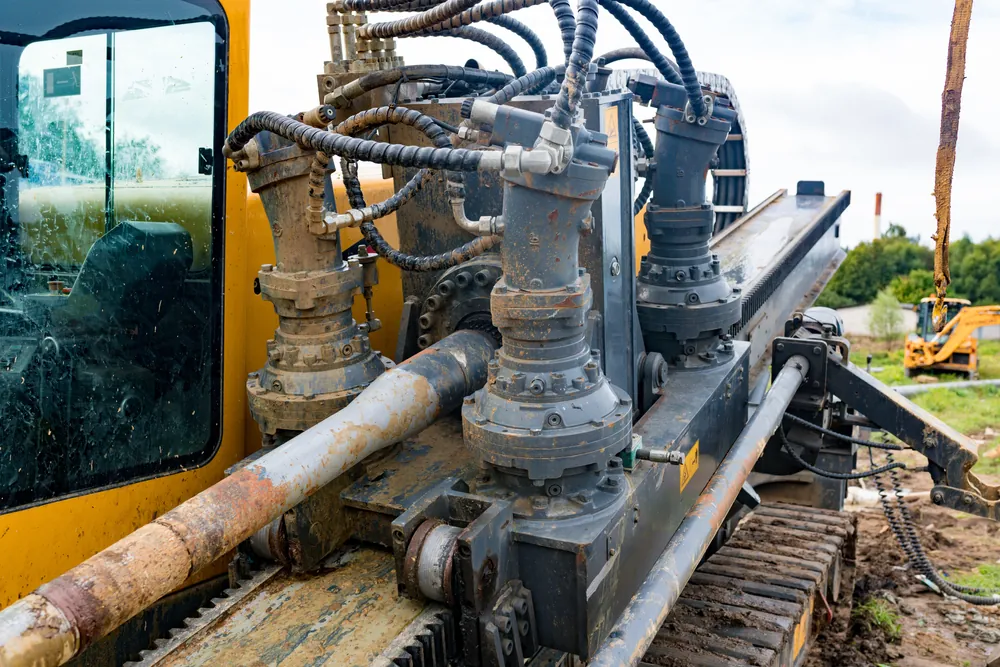Now Also operating from our new yard in Alice Springs. Our address is 3/31 Elder Street Ciccone 0870.
The Evolution of Directional Drilling: Innovation and Risk Reduction in 2025
September 18, 2025
Directional drilling has rapidly evolved from a niche technique into a game-changer for civil engineering and construction. It’s not just about getting from point A to point B underground; it’s about doing so with unmatched precision, efficiency, and sustainability. With AI, real-time data analytics, and advanced geospatial mapping now at the forefront, the industry is entering a new era where accuracy and control set the standard for success. At JSM Civil, we’ve seen how these innovations don’t just streamline projects but also reduce risks, enhance safety, and deliver stronger results for our clients.
By embracing cutting-edge tools and smarter strategies, we’re helping redefine what’s possible in directional drilling. In this article, we’ll explore the key breakthroughs and how risk-reduction practices are ensuring every project moves forward with confidence. Let’s get into it!

Horizontal directional drilling (HDD) operations rely on digital technologies to enhance precision, safety, and compliance. Through live oversight and data-driven planning, HDD projects are efficient and adhere to stringent regulatory standards. Below, we will discuss how these technologies are reshaping HDD operations.
The integration of advanced sensors into HDD equipment allows for continuous monitoring of various operational parameters. These sensors give operators a live dashboard of drill performance, so they can make instant adjustments and avoid costly mistakes. This real-time data helps in making instantaneous adjustments, minimising the risk of errors and ensuring that the drilling path adheres strictly to the planned trajectory.
Geospatial technologies, including GPS and GIS, play a role in HDD operations by providing precise location data. With pinpoint mapping, operators can steer clear of underground utilities, avoiding expensive damage and project delays. By ensuring precise alignment, geospatial technologies contribute to operational safety and efficiency.
Leveraging predictive analytics, HDD operators can anticipate potential challenges and optimise drilling strategies accordingly. Predictive models use past and current data to optimise strategies, boosting efficiency and ensuring compliance.
Digital technologies streamline the compliance process by automating data collection and reporting. HDD operators can maintain comprehensive digital records that are easily accessible for audits and inspections. Automated compliance ensures that all regulatory requirements are met consistently, reducing the risk of non-compliance penalties and enhancing the company’s reputation with stakeholders.
Digital platforms facilitate seamless communication and collaboration among project teams, stakeholders, and regulatory bodies. Real-time data sharing ensures that everyone involved has access to the latest information, which is critical for making informed decisions quickly.
For contractors, the choice between HDD and open-cut excavation isn’t just about methodology; it’s about balancing safety, community impact, and long-term return on investment. While open-cut remains a traditional method, HDD has become the go-to option in 2025 for projects demanding minimal disruption, faster turnaround, and improved safety outcomes.
In today’s urban and suburban environments, community disruption is often the biggest risk to project success. HDD addresses these concerns head-on by minimising the need for road closures, large work zones, and extended noise pollution.
ROI in construction goes far beyond initial equipment costs because it’s about the total cost of ownership. HDD has proven to deliver stronger long-term returns despite higher upfront investment.
Risk management is important in directional drilling. In Australia, the unique combination of urban density, environmental concerns, and cultural heritage sites necessitates a comprehensive approach to managing risks. This section tackles the essential strategies focused on workforce skills and ongoing training, which are crucial for mitigating risks in these challenging environments.
Directional drilling in urban and sensitive sites requires a workforce equipped with specialised skills. The intricacies of navigating through densely populated areas and avoiding interruptions to existing infrastructures demand a high level of expertise. Several key competencies are emphasised:
To maintain a workforce that is adept at managing the risks associated with urban and sensitive site drilling, ongoing training programmes are essential. These are structured to keep pace with technological advancements and regulatory changes.
The collaboration between drilling companies and educational institutions plays a role in workforce development. These partnerships facilitate a continuous influx of skilled workers who are well-prepared to tackle the challenges of directional drilling.
The evolution of directional drilling shows how innovation and risk reduction are reshaping the industry, delivering safer, smarter, and more sustainable results. These innovations now mean faster delivery, safer worksites, and stronger returns for contractors and clients. At JSM Civil, we’re proud to lead this transformation that helps clients unlock the full potential of directional drilling. Ready to future-proof your next project? Partner with us and drill with confidence!
